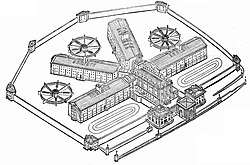Dark figure of crime
The dark (or hidden) figure of crime is a term employed by criminologists and sociologists to describe the amount of unreported or undiscovered crime.[1]
| Criminology and penology |
|---|
 |
|
Methods |
|
Schools |
Methodology
This gap between reported and unreported crimes calls the reliability of official crime statistics into question, but all measures of crime have a dark figure to some degree. The gap in official statistics is largest for less serious crimes.[1]
Comparisons between official statistics, such as the Uniform Crime Reports and the National Incident-Based Reporting System, and victim studies, such as the National Crime Victimization Survey (NCVS), attempt to provide an insight into the amount of unreported crime.[2][3]
Self-report studies are also used in comparison with official statistics to assess the dark figure of crime.[1]
References
- Walsh, Anthony; Hemmens, Craig (2014). Introduction to Criminology: A Text/Reader (3rd ed.). Thousand Oaks, CA: SAGE Publications, Inc. ISBN 978-1-4522-5820-1.
- Maxfield, Michael G.; Weiler, Barbara Luntz; Widom, Cathy Spatz (2000). "Comparing Self-Reports and Official Records of Arrests". Journal of Quantitative Criminology. 16 (1): 87–110. doi:10.1023/a:1007577512038.
- Biderman, Albert D.; Lynch, James P.; Peterson, James L. (1991). Understanding Crime Incidence Statistics: Why the UCR Diverges from the NCS. New York, NY: Springer.
Further reading
- Moore, S. (1996). Investigating Crime and Deviance. Harpers Collins. ISBN 0-00-322439-2, pages 211–220.
- Coleman, C., & Moynihan, J. (1996). Understanding crime data: haunted by the dark figure. Open University Press. ISBN 0-335-19519-9.
.svg.png)